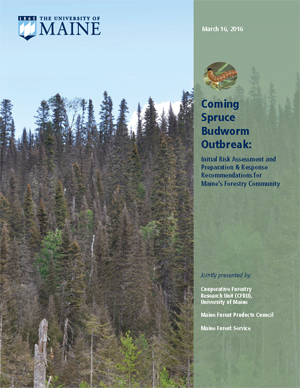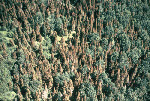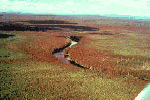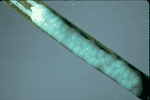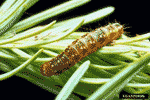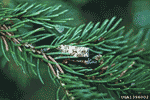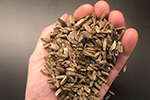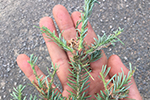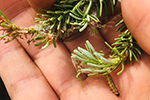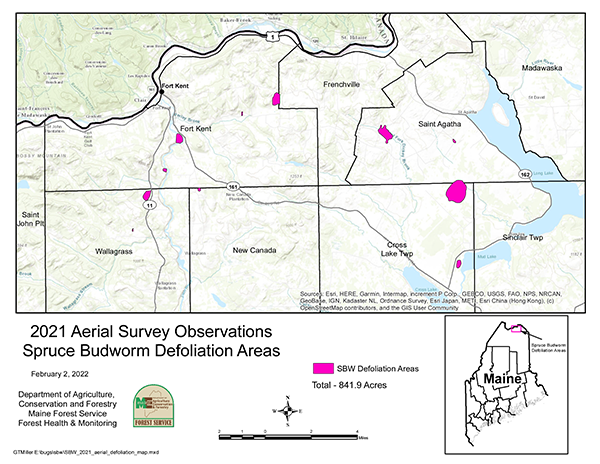DACF Home → Bureaus & Programs → Maine Forest Service → Forest Health & Monitoring → Forest Pest Index → Spruce Budworm in Maine
Spruce Budworm in Maine
- On this page:
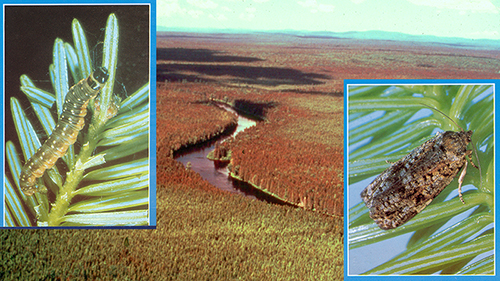
Spruce Budworm Overview
As spruce budworm numbers remain on the rise throughout Maine, the Maine Forest Service and its cooperators continue to track populations carefully in anticipation of an approaching outbreak.
A successful spruce budworm (SBW) monitoring program requires a multi-pronged approach and relies on the use of methods such as pheromone trapping, light trapping, overwintering larval sampling, and aerial and ground survey. At the core of the Maine Forest Service (MFS) monitoring program lies the extensive pheromone trap network throughout the spruce-fir forests of northern Maine. A permanent pheromone trap network was first established in 1992 and was made up of about 80 sites operated by MFS, J.D. Irving Ltd, Penobscot Nation Department of Natural Resources, and the USDA Forest Service. Since 2014, with the support of a large cooperator team of more than twenty land owners and managers, the pheromone trap network has grown to include more than 400 sites.
SBW is a native insect whose outbreaks cover vast regions and spread through massive dispersal flights as moths migrate from heavily impacted areas to new ones. In northeastern North America, SBW outbreaks tend to return on a 30-60 year interval and the last major SBW outbreak to directly affect Maine occurred during the 1970s-80s. Historical data tell us that Maine is due for another SBW outbreak and monitoring efforts illustrate that over the last several years, SBW population levels appear to have left the endemic or “stable” phase experienced between outbreak events. For several years now in Maine, both pheromone trap and light trap catches have been above numbers expected during the endemic phase and millions of acres of defoliation in neighboring Canadian provinces continues to encroach on the Maine border. Large in-flights of migrating moths from outbreak areas in Canada into northern Maine were well-documented in 2019. The impacts of these migration events on Maine’s forests remain to be seen.
Maine Spruce Budworm Task Force
Spruce Budworm Photos
Pheromone Trap Catches
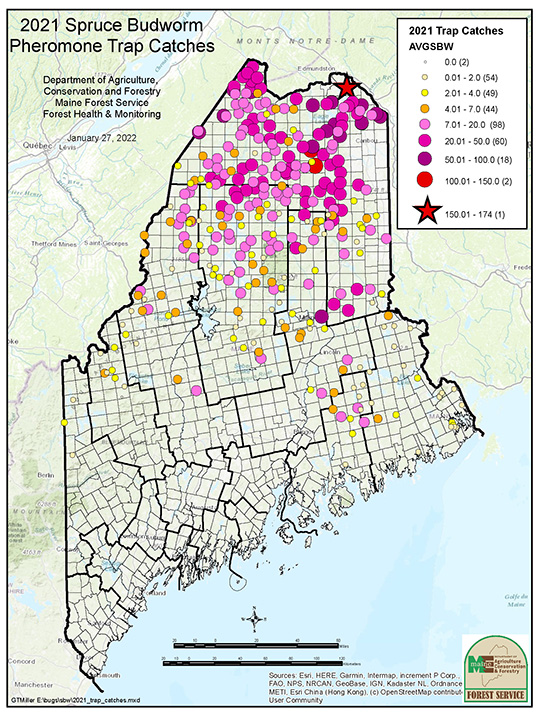
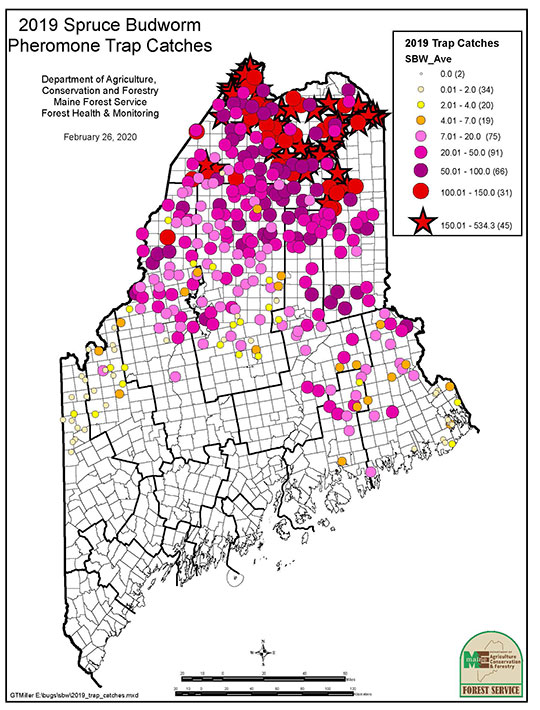
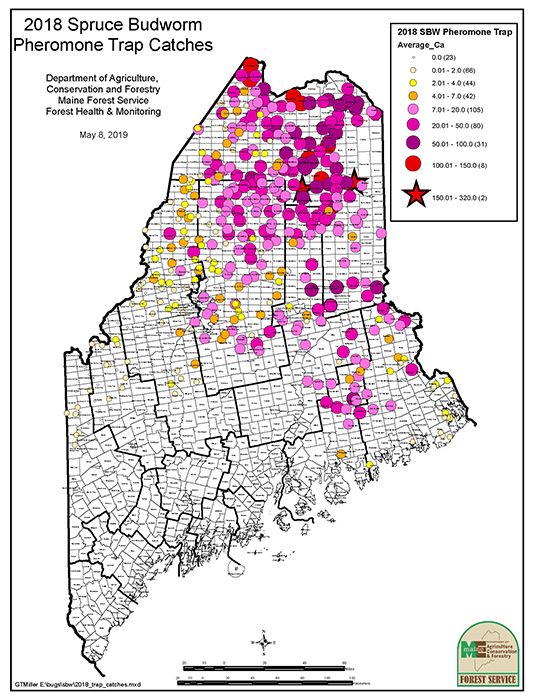
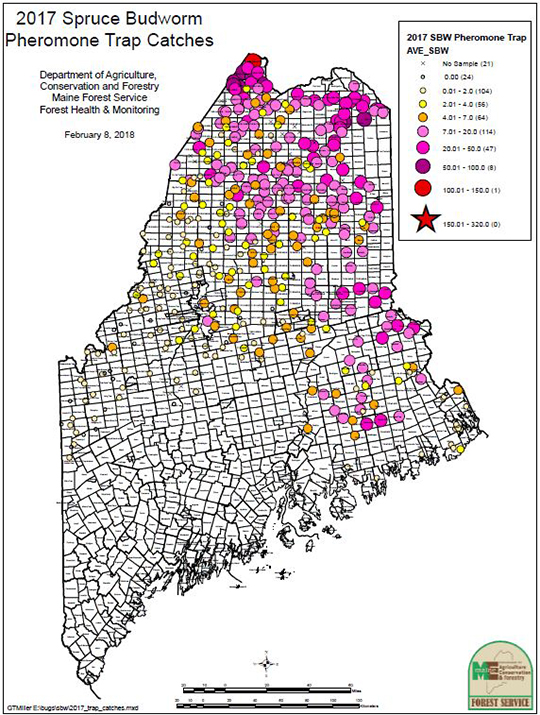
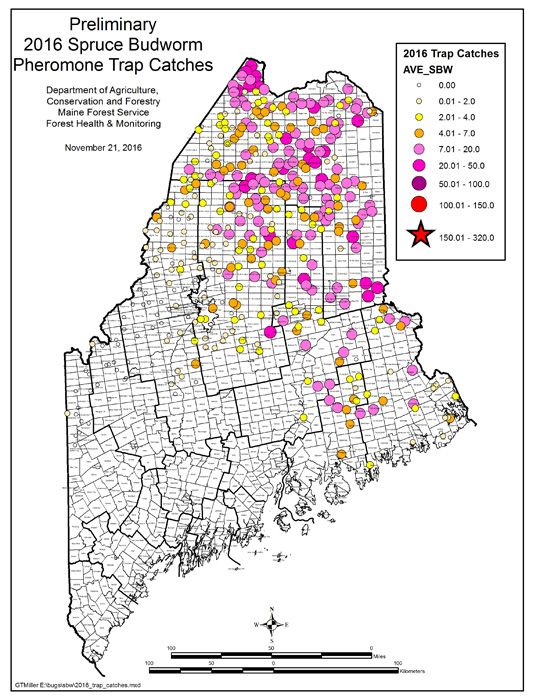
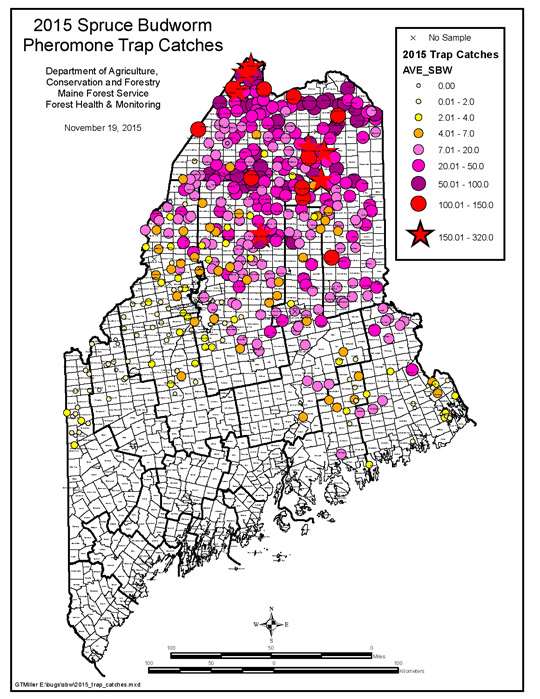
Population Indicators
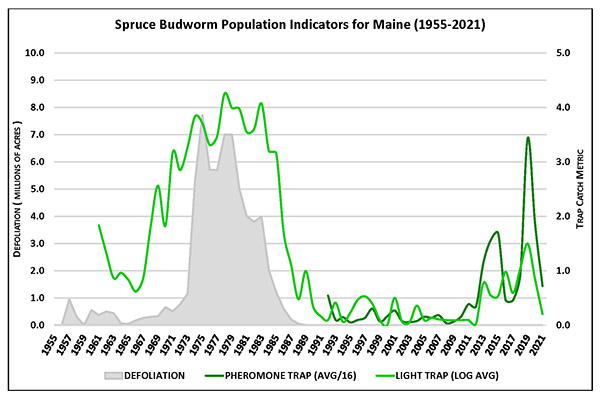
Aerial Defoliation Survey
Ground Defoliation Survey
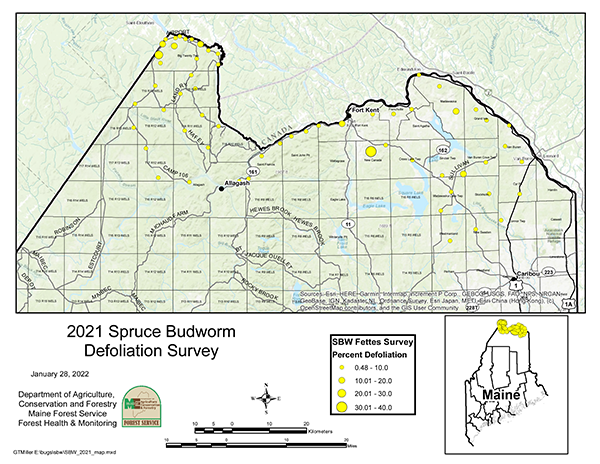
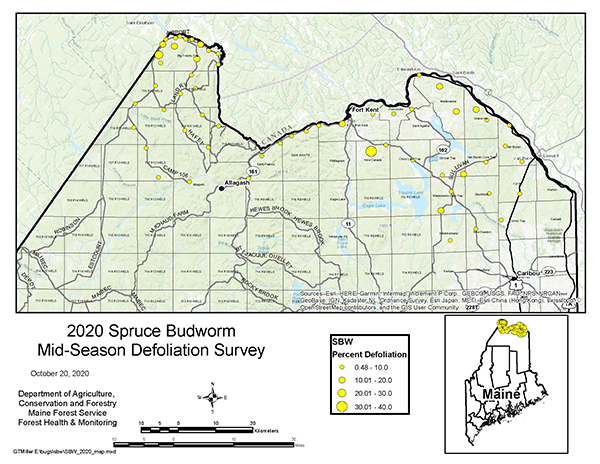
SBW larval defoliation is evaluated using a ground-based surveyat 60 sites in northern Aroostook County annually. Defoliation is quantified using the Fettes Method and is characterized as trace (0-5%), low (6-20%), moderate (21-50%), high (51-80%), or severe (81-100%). The Fettes method captures defoliation from all causes and can be used to estimate both current-year defoliation and cumulative defoliation. A brief introduction to the Fettes Method is provided in this document:
http://www.sampforestpest.ento.vt.edu/defoliating/spruce-budworm/pdf/montgomery-etal1982-sbw.pdf.
Defoliation assessment will also be performed on all branch samples collected for overwintering L2 larval sampling in Maine. Results from this survey will be made available by the University of Maine Cooperative Forest Research Unit as completed.
Spruce Budworm Outlook
The devastating outcome of the last SBW outbreak during the 1970s-80s in Maine reflects in part the ideal forest condition for the pest leading up to the outbreak. Millions of acres of mature and overmature spruce-fir forest were impacted and a blow of hundreds of millions of dollars was dealt to Maine’s forest-based economy. Although we know SBW populations continue to climb, predicting the precise trigger point and trajectory of a modern outbreak remains difficult given the changes in forest composition between then and now. The fir component of northern Maine is now younger on average and has been substantially reduced, however some 5.8 million acres of spruce-fir forest and 27.3 million cords of merchantable fir at still at risk. As long as the potential for serious damage on this scale exists, a rigorous population monitoring program involving managers at all stages will remain one of the most important components of a timely response when the next SBW outbreak finally takes off.
Resources for Pheromone Trap Cooperators
- Pheromone Trap Retrieval Instructions (PDF | 2.67 MB)
- Trapping Datasheet (PDF | 259 KB)
- Instructions for Spruce Budworm Pheromone Trap End of Season Pick-up For Maine Forest Service Personnel and Cooperators Using the Multi-Pher II and a 3-Trap Cluster (PDF | 509 KB)
- Labels for Inside Spruce Budworm Sample Bags (Alternative to adhesive labels) - Maine Forest Service and Cooperators (PDF | 99 KB)
- Labels for Inside Spruce Budworm Sample Bags (for Avery 5160 adhesive labels) - Maine Forest Service and Cooperators (PDF | 98 KB)
